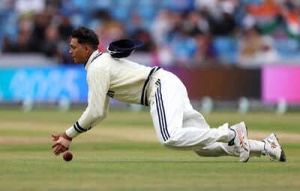The timing of your meals, particularly carbohydrate-rich staples like rice, plays a vital role in weight management and blood sugar control. Studies indicate that eating rice earlier in the day, ideally at lunch, aligns with your body’s circadian rhythm, when metabolism and insulin sensitivity are at their peak. This helps minimise post-meal glucose spikes, improves energy utilisation, and supports fat burning. In contrast, consuming rice at night, when metabolic activity slows, can lead to higher blood sugar levels, increased fat storage, and digestive discomfort. For better weight control and overall health, plan rice-based meals during the day rather than dinner.
Why eating rice at lunch is better for weight loss and blood sugar control
Your body’s insulin sensitivity and metabolic activity follow a natural circadian rhythm, peaking during daylight hours and tapering off at night. This means carbohydrate-rich meals like rice are processed more efficiently earlier in the day, reducing fat storage and supporting energy balance. Eating rice late at night, when insulin sensitivity is lowest, can cause higher blood sugar and increase the risk of weight gain.
A study published in The American Journal of Clinical Nutrition found that consuming high-carbohydrate meals like rice earlier in the day improved post-meal glucose control and reduced overall insulin response compared to evening consumption, supporting healthier weight management.
Smart eating habits of rice for weight loss and blood sugar
1. Lunchtime
Rice is best eaten around midday when metabolism is most active. This timing helps the body manage glucose more efficiently and provides sustained energy. Opt for whole-grain varieties such as brown, red, or wild rice for added fibre and slower digestion.
2. Avoid heavy rice meals at dinner
Late-night rice meals can spike blood sugar because the body is less active and less sensitive to insulin in the evening. If you do eat rice at night, keep portions small, add fibre-rich vegetables, and pair with lean protein to minimise the impact on blood sugar.
How to make rice diabetes-friendly
If you have diabetes or want to maintain stable blood sugar, rice doesn’t have to be off your plate. Here’s how you can make it healthier:
1. Choose low-GI rice varieties: Brown, red, black, or basmati rice have a lower glycaemic index than white rice, meaning they raise blood sugar more gradually.
2. Cool and reheat rice: Cook rice, let it cool for a few hours (or overnight), and then reheat before eating. This process increases resistant starch, a type of carbohydrate that acts like fibre, reducing glucose spikes and feeding good gut bacteria.
3. Add protein and healthy fats: Pair rice with protein (fish, chicken, eggs, tofu) and healthy fats (olive oil, avocado) to slow digestion and keep glucose levels steady.
4. Include non-starchy vegetables: Start your meal with fibre-rich vegetables like leafy greens, broccoli, or salads. Eating fibre first helps reduce post-meal blood sugar spikes.
5. Practice portion control: Stick to about ½ cup (cooked) rice per meal. Larger servings can overwhelm your system and cause glucose surges.
6. Try vinegar or lemon juice: Adding a splash of vinegar or lemon juice to your meal can slightly lower the glycaemic impact of rice.
Smart strategies to make rice work for effective weight management
1. Choose whole-grain rice: Provides more fibre and keeps you full longer.
2. Eat rice earlier in the day: Helps your body utilise energy efficiently.
3. Keep portions moderate: ½ cup cooked rice is a good guideline.
4. Combine with veggies and protein: Slows digestion and blunts glucose spikes.
5. Cool rice before eating: Boosts resistant starch for better blood sugar control.
Disclaimer: This article is for informational purposes only and does not constitute medical advice. Always consult a qualified healthcare professional before making any changes to your health routine or treatment.
 Kavya Maran on IPL Fame, Team Passion, and Viral Meme Status
Kavya Maran on IPL Fame, Team Passion, and Viral Meme Status
 Rishabh Pant's 'Revolutionary' Batting Redefining Cricket, Says Greg Chappell
Rishabh Pant's 'Revolutionary' Batting Redefining Cricket, Says Greg Chappell
 Raducanu Quashes Alcaraz Romance Rumors, Confirms US Open Doubles Partnership
Raducanu Quashes Alcaraz Romance Rumors, Confirms US Open Doubles Partnership
 FIFA Club World Cup 2025: Upsets, Messi Magic, and 2026 World Cup Concerns Emerge From Group Stage
FIFA Club World Cup 2025: Upsets, Messi Magic, and 2026 World Cup Concerns Emerge From Group Stage
 Rohit Sharma Reflects on India's T20 World Cup Win, Hails Barbados as Key to Victory
Rohit Sharma Reflects on India's T20 World Cup Win, Hails Barbados as Key to Victory
 Warning Signs: 5 Subtle Symptoms of Prediabetes You Shouldn't Ignore
Warning Signs: 5 Subtle Symptoms of Prediabetes You Shouldn't Ignore
 Wimbledon 2025: Dates, Prize Money, and Streaming Guide for Fans in India & US
Wimbledon 2025: Dates, Prize Money, and Streaming Guide for Fans in India & US
 Gavaskar Calls for Kuldeep Yadav's Inclusion in Second Test Amid Bumrah Fitness Concerns
Gavaskar Calls for Kuldeep Yadav's Inclusion in Second Test Amid Bumrah Fitness Concerns
 Former India Selector Slams Fielding Blunders After Test Defeat to England
Former India Selector Slams Fielding Blunders After Test Defeat to England
 Former Pakistan Player Kamran Akmal Blasts PCB Over Azhar Mahmood Test Coach Appointment
Former Pakistan Player Kamran Akmal Blasts PCB Over Azhar Mahmood Test Coach Appointment